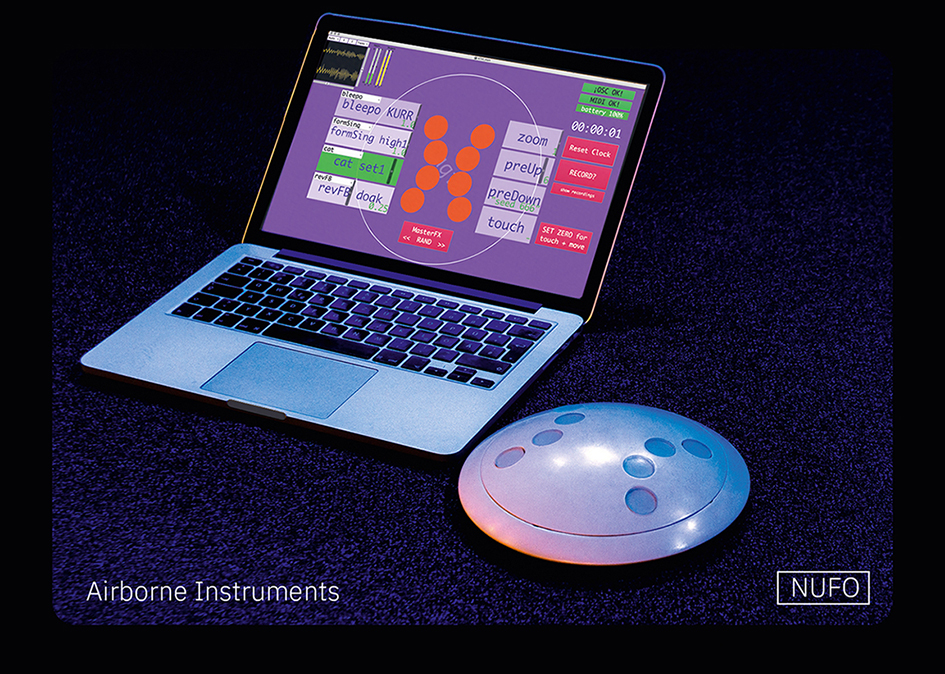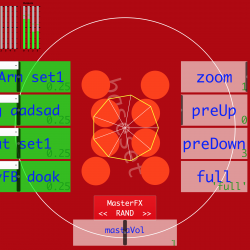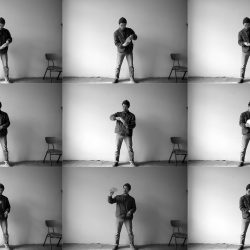NTMI – NonTrivial Music Instrument a.k.a NUFO
Description
The NTMI – NonTrivial Music Instrument – is a new digital musical instrument facilitating a unique form of intuitive gestural play supported by its wireless interface and special software architectureWhat is the Topic?
How can body movement generate new musical expression using digital technologies without having to become an expert in these complex technologies? We provide an instrument that allows musicians, dancers, amateurs and others to intuitively play multi-layered electronic music at low entry thresholds. At the same time, the tool provides expert users with open interfaces to personalize and participate in the further development of complex sound processes in a community.
Why does it look like this?
Unlike virtually all electronic musical instruments designed for table-top use and handheld mobile devices that are optimized for reading and typing, the round ergonomic shape of the NTMI is perfectly tuned to it, good and secure in the hand to be moved and expressively moved; the capacitive sensors react precisely and sensitively. This results in a micro-motoric usability that comes very close to the haptic wealth of a traditional musical instrument.
What is special?
Unlike most conventional instruments, it can be moved freely in space, and the location, orientation, movement, and acceleration of the instrument in the room affect the sounding music. ‣ Influx inside Playing with a continuous synthesis process is technically a navigation in a multi-dimensional parameter space. Normally, instrument designers assign a controller to each parameter, e.g. a slider on a virtual or physical interface. This assignment is called mapping. In our instrument, we use an innovative, alternative type of mapping, Influx (developed in 2015 by Prof. de Campo), in which each control value can have an effect on each sound parameter. This "entanglement" causes the conventional causal thinking model in the flow of the game to be quickly replaced by a very direct but complex coupling of movement and resulting sound. The performer is freed from the cognitive burden of analytical thinking and can fully concentrate on the resulting sound.
What is new?
After a 15-minute test with the instrument, design professor Scheipner described this very aptly: It immediately creates the feeling of interacting with an organism that, like a pet, follows its own inscrutable motives, but easily moves in the direction of the own taste influences. This non-trivial behavior of the instrument represents a truly innovative, conversational type of human-machine interaction in which the digital system becomes more of a tool, an interesting game partner, that can surprise players and the relationship of interaction Putting intuition and learning in a new light.




